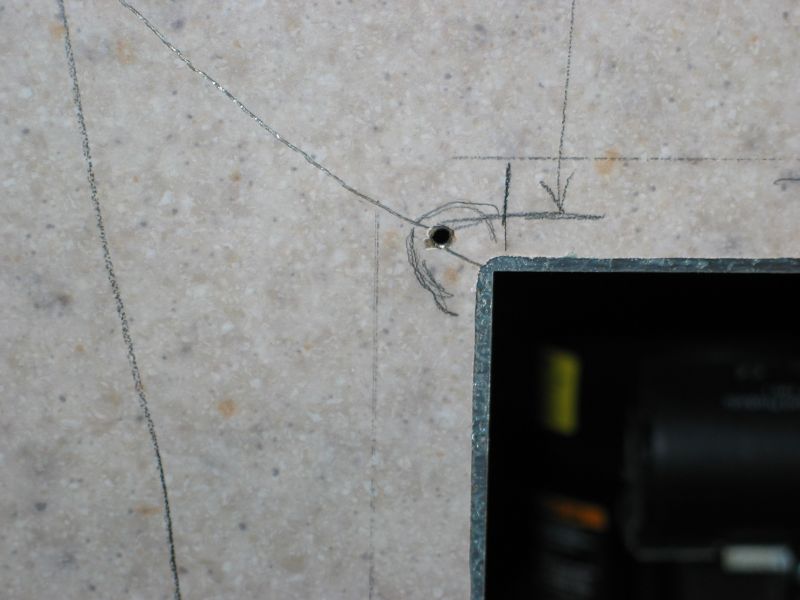Rough-Cutting Laminate
Techniques for rough-cutting laminate sheets, in the shop or on site. May 11, 2006
Question
Before taking my laminate on site, where it will be trimmed to the substrate, what's the best way to cut it nearly to size? I've little experience with laminate sheets, as most countertops here in the UK are bought from the manufacturers already laminated and postformed.
Forum Responses
(Laminate and Solid Surfacing Forum)
From contributor M:
I precut my laminate all the time, and have found the best way is with a dummy countertop I have at the shop and a router. Given the largest laminate you can get is 5'x12' and most tops are 25" deep, I built a dummy top that is 26" deep and 12' long. I also have a top that is 26" deep and 3' long that can be attached to either end of the long top to make it an L shaped top. Then I just clamp the laminate to the dummy top and route it out. I also use a straight board clamped to the laminate and use my router to cut pieces to length. I lay this dummy top on top of a 5'x12' grid that will support the laminate as it is cut off so that it does not rip as it is being cut. One other thing to keep in mind is do not try to roll up laminate that you have precut to an L shape - it will very likely rip at the inside corner when you start to roll it (learned this the hard way). Another trick I use is to glue a small gusset to this inside corner to reinforce it until I get it in place for the last time.
From contributor J:
Similar to contributor M, but I just use a straight edge, i.e. piece of ply or solid, make it 2" oversize, clamp it underneath laminate and using a trim bit in a router, just zip it off. If you are using large sheets, then just lay 'em on a sheet of ply and use its edge, same process.
From contributor B:
I have a form much like contributor M's out of 1/2" MDF that's easily expandable. But when an "L" is needed, my side piece has a 2" radius piece attached, so when the 90 degree inside corner is routed, there is an inside radius that helps prevent stress breaks, much like solid surface. It's made a difference because I generally work tops alone, and used to get breaks often when lifting the laminate onto the substrate.
From contributor C:
Wow, that's a lot of setup. I do most of my tops on site, but some in the shop. I find a spot where I can roll out the lam overnight to let it relax before I glue and cut it. Long rips with or against the grain I use a lam scorer and make a few passes (must be with a straight edge), then snap it. I can rip a 5x12 by myself in a minute or two, very fast. I also have a pair of lam shears for cutting L's, but your hand will get tired quick. If you can build your top and let it float, then you can put your lam on top, cut it with an overhang bit (a bit with a bearing larger than the cutting diameter of the bit). These guys are right about the inside corners ripping. Watch it!
From contributor A:
If you're just rough cutting on site, just use a circular saw. I do it all the time to fit in countertops. I usually make the cut a 1/2 wider so that once the material is in place and the front edge is done, I just router off excess.
From contributor P:
I've always used a table saw with no problems. For rips and crosscuts, just raise the laminate a bit in front of the blade and against the fence as you feed the laminate into the blade, so not to get it caught under the fence. There is also a jig available for table saw cutting.
From contributor D:
We cut laminate on site with what we call the "big bearing." It's a standard bottom-bearing router bit with an oversized bearing. We set the laminate on the countertop and this bit cuts it to shape, with about 3/8" excess.
From contributor I:
Try using a pair of electric metal cutting shears, like the ones hvac uses. To prevent major chips, keep moving quickly through your work.
